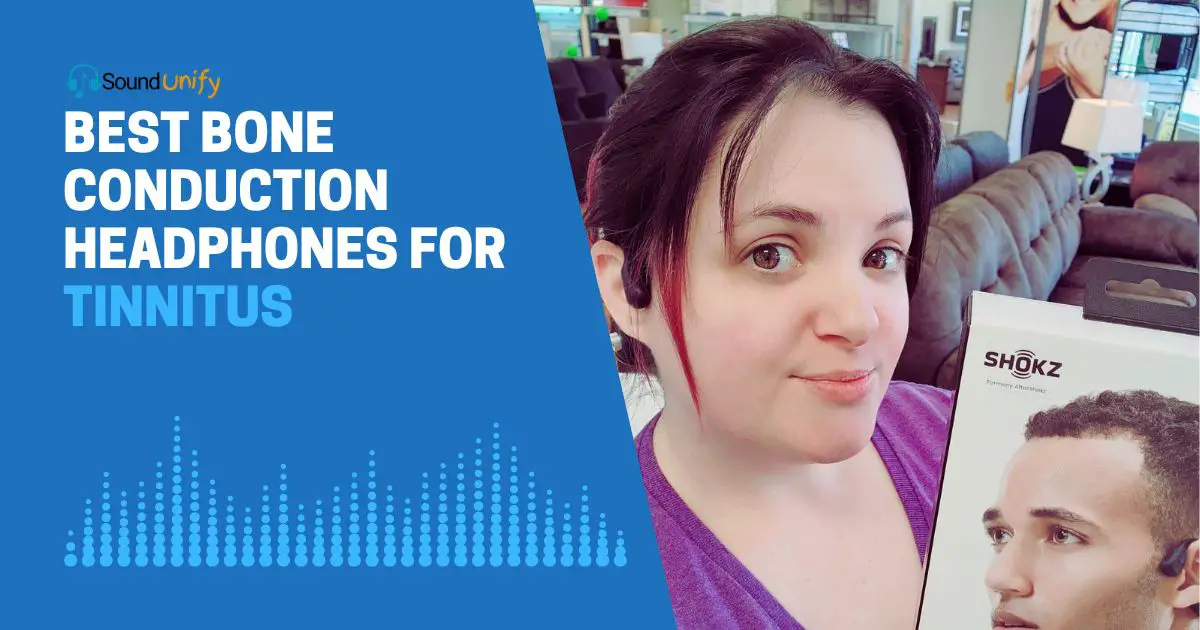Bone conduction headphones can be a game-changer for people suffering from tinnitus. They offer a unique way to enjoy sound without exacerbating your symptoms.
I know how debilitating tinnitus can be. That constant ringing or buzzing in your ears can turn even the simplest tasks into a struggle.
But imagine being able to listen to your favorite music, podcasts, or audiobooks without the fear of worsening your condition. That’s where bone conduction headphones come in.
These innovative devices work differently from traditional headphones. Instead of sending sound waves through your ear canal, they transmit vibrations directly to your inner ear through your skull.
This bypasses the outer and middle ear where tinnitus typically originates, reducing the risk of aggravating your symptoms.
If you’re like me, you’ll want to stick around, always looking for ways to make life with tinnitus more bearable. Let’s dive deeper into how bone conduction headphones could be your new best friend in managing tinnitus.
| Model | Battery Life | Waterproof | Bluetooth | Rating | Price |
|---|---|---|---|---|---|
| Shokz OpenRun – My 1st Recommend | 8 hours | IP67 | 5.1 | 4.9/5 | Check Price |
| Shokz OpenRun Pro – My 2nd Recommend | 10 hours | IP55 | 5.1 | 4.5/5 | Check Price |
| PURERINA X14 – Affordable with quality | 6 hours | IPX5 | 5.0 | 4.1/5 | Check Price |
| ZKAPOR k1 – Cheap price | 8 hours | IP56 | 5.0 | 3.5/5 | Check Price |
| OUFUNI X1 – Affordable with quality | 6 hours | Yes | 5.0 | 4.0/5 | Check Price |
Top 5 Best Bone Conduction Headphones for Tinnitus
While there are many bone conduction headphones on the market, a few models stand out for their quality and features:
1. Shokz OpenRun
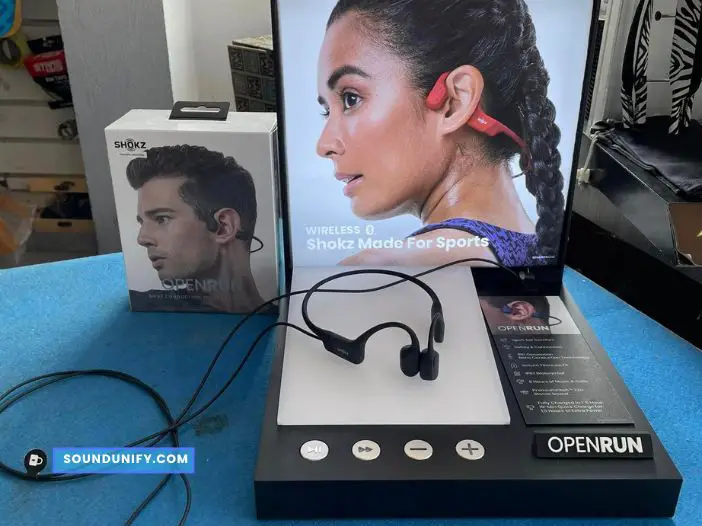
As a tinnitus sufferer, I’ve been on a constant quest for a solution that can help me enjoy music without exacerbating my condition. My search led me to the SHOKZ OpenRun Open-Ear Bluetooth Bone Conduction Sport Headphones; they’ve been a revelation.
The open-ear comfort of the OpenRun headphones is a game-changer. They’re feather-light and wrap around your head, leaving your ears free. This design is fresh air, especially if you’re like me and find earbuds uncomfortable. The included Shokz headband adds an extra layer of comfort and stability.
The 8th-generation bone conduction technology in these headphones is impressive. It delivers quality audio while leaving your eardrums open to your surroundings. This feature is crucial for safety, especially during outdoor workouts. I can enjoy my favorite tunes while being aware of what’s happening around me.
The OpenRun headphones are IP67 waterproof rated, making them sweat and waterproof. This feature has been a lifesaver during intense workout sessions. But it’s worth noting that they’re not suitable for swimming.
Battery life is another area where these headphones shine. They offer eight continuous hours of music, calls, and podcasts. Plus, they have a quick charge feature that provides up to 1.5 hours of battery life with a 10-minute charge. This has come in handy on more than one occasion when I still need to charge them.
The sound quality of these headphones is outstanding. The Bone conduction technology transmits sound through vibrations in your cheekbone to your inner ear. This provides a premium audio experience that’s been a joy to my music-loving ears.
Pros:
- The open-ear design provides comfort and safety.
- 8th generation bone conduction technology delivers quality audio.
- IP67’s waterproof rating makes them suitable for workouts.
- Impressive battery life with a quick charge feature.
- Outstanding sound quality due to bone conduction technology.
Cons:
- Not suitable for swimming despite being waterproof.
- The open-ear design might not be ideal for those seeking noise isolation.
2. Shokz OpenRun Pro
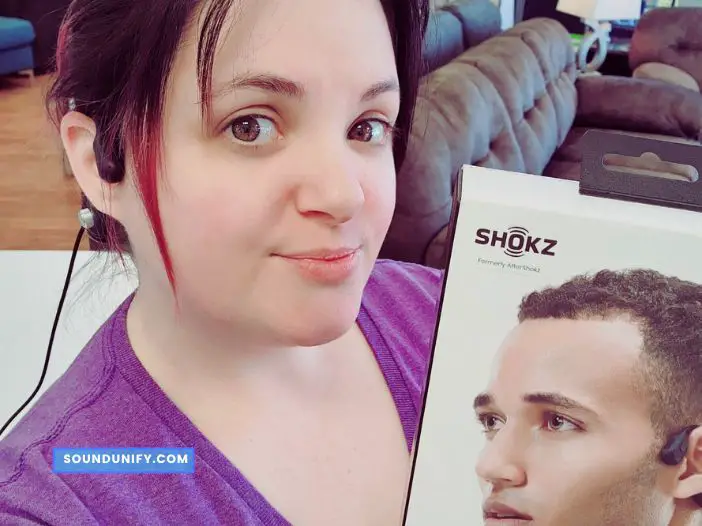
As a person with tinnitus, I’ve found solace in bone conduction headphones. After using the SHOKZ OpenRun headphones, I decided to try their upgraded version, the SHOKZ OpenRun Pro. And they’ve exceeded my expectations.
The OpenRun Pro headphones offer an even better fit than their predecessor. They’ve managed to eliminate the discomfort of in-ear headphones with their bud-free design. These headphones stay put, no matter how intense my workout gets. The included Shokz headband is a nice touch, adding to the comfort.
One of the things I loved about the original OpenRun was its safety, allowing me to stay aware of my surroundings. The OpenRun Pro takes this further, providing an even better connection and security than traditional earbuds or over-ear headphones.
The sound quality of the OpenRun Pro is a noticeable upgrade. The 9th generation bone conduction technology delivers premium audio through your cheekbone. The Shokz TurboPitch technology provides a listening experience that’s clear, powerful, and rich in bass. It’s a significant improvement over the already impressive OpenRun.
The lightweight, wraparound titanium frame ensures the headphones stay stable and in place during intense training. This was a feature I appreciated in the OpenRun, and I’m glad to see it’s been maintained in the Pro version.
The battery life of the OpenRun Pro is another upgrade. They offer ten continuous hours of music, calls, and podcasts. Plus, they have a quick charge feature that provides up to 1.5 hours of battery life with just a 5-minute charge.
Pros:
- Improved fit and comfort compared to the OpenRun.
- Enhanced safety and connection to the environment.
- Premium sound quality with Shokz TurboPitch technology.
- Stable and secure fit during intense workouts.
- Extended battery life with a quick charge feature.
Cons:
- Not suitable for Audiophiles.
- The price point is higher than the original OpenRun.
3. PURERINA X14
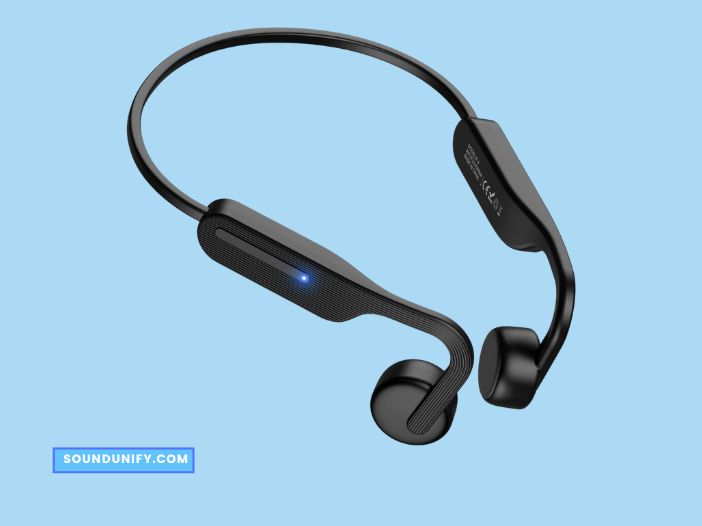
I’ve come across a product that’s been getting much attention: the PURERINA Bone Conduction Headphones. While I haven’t used these headphones, I’ve read many reviews, watched unboxing and review videos, and analyzed customer feedback. This extensive research shows that these headphones could be a game-changer for those with tinnitus.
The standout feature of these headphones is their open-ear design. They deliver sound through your cheekbones, bypassing the eardrums. This could be a significant advantage for those with tinnitus. Plus, this design allows you to stay connected with your surroundings, which is a safety bonus for outdoor enthusiasts.
The headphones use a Bluetooth 5.0 chip, ensuring a stable and fast connection. This means no more annoying interruptions while you’re in the middle of a song or a call. According to many reviews, the sound quality is high, promising a delightful musical experience.
Comfort and stability are the keys of headphones; PURERINA seems to have nailed it. The headphones are lightweight, weighing only 30 grams, and have silicone pads on both sides. The frame is made of titanium memory metal, which can recover its shape after bending. This ensures the headphones stay put, even during intense workouts.
The headphones are dust- and water-resistant, making them perfect for indoor and outdoor activities. Whether you’re sweating it out in the gym or caught in a drizzle during a run, these headphones can handle it.
Battery life is another crucial factor to consider. The PURERINA Bone Conduction Headphones offer up to 6 hours of continuous music and calls on a single charge. Plus, they have a standby time of up to 240 hours. This means less time charging and more time enjoying your music.
Pros:
- Stable and fast connection with Bluetooth 5.0.
- Comfortable and lightweight, suitable for long-term use.
- Dust and water-resistant, perfect for indoor and outdoor activities.
- Long battery life with up to 6 hours of continuous use.
Cons:
- The material was not durably strong.
- Call management is too complicated.
4. ZKAPOR k1
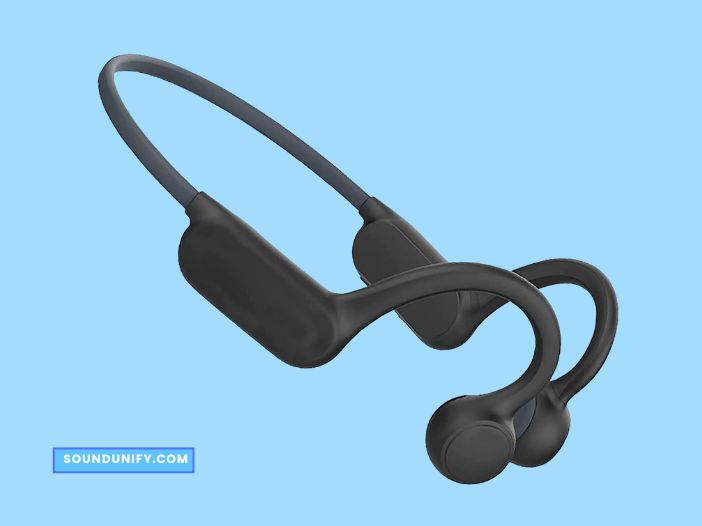
As someone exploring various solutions for tinnitus, I’ve encountered the SZKAPOR k1 Bone Conduction Headphones. I haven’t used these headphones, but I’ve read many reviews, watched many videos, and looked at what customers have said about them. Based on this research, these headphones could be a viable option for those with tinnitus.
The SZKAPOR k1 headphones have a design that lets sound come to your ears without covering them. This design is particularly beneficial for those with tinnitus. It allows you to enjoy music without exacerbating the condition. Plus, it ensures you remain aware of your surroundings, which is a safety bonus for outdoor activities.
The headphones use Bluetooth 5.0 technology, providing a stable and lag-free connection. Reviewers have praised this feature, as it means no more annoying interruptions during a song or a call. While not as rich as some higher-end models, the sound quality is reportedly decent for the price point.
According to reviewers, comfort and stability are essential for headphones, and SZKAPOR delivers in this area. The headphones are lightweight and flexible, ensuring comfort during extended wear. They offer a long battery life for 5-6 hours of continuous music and calls.
The SZKAPOR k1 headphones are also easy to use, with one multi-function button controlling all functions. This includes easy controls to play/pause, adjust volume, and switch tracks.
The headphones are IP56 waterproof and sweatproof. This makes them suitable for indoor and outdoor activities. Whether you’re working out in the gym or caught in a drizzle during a run, these headphones can handle it.
Pros:
- The cable of good manufactured.
- Good value for money.
- Easy to use with one multi-function button.
- IP56 is waterproof and sweatproof, perfect for indoor and outdoor activities.
Cons:
- The material is not strong.
5. OUFUNI X1
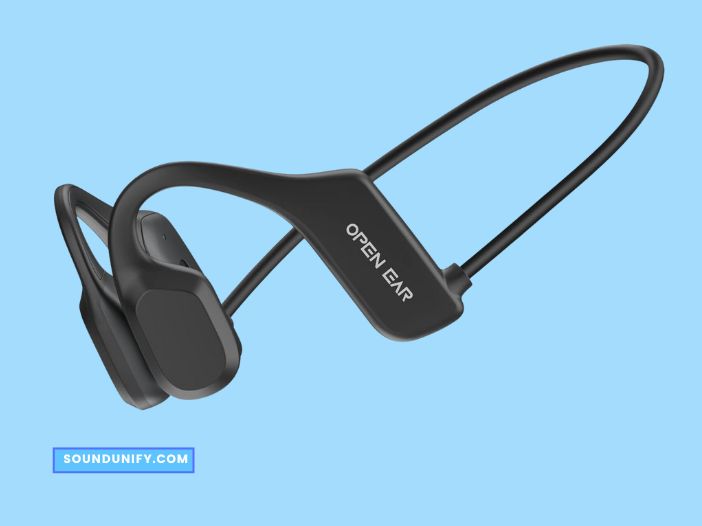
The OUFUNI X1 Bone Conduction Headphones have caught my attention in my quest to find affordable solutions for tinnitus. Although I have yet to have the chance to use these headphones, I’ve gathered much information from customer reviews and feedback. From what I’ve learned, these headphones are cost-effective for those with tinnitus.
The OUFUNI X1 headphones, as reviewers have noted, feature a unique sizing guide, ensuring a perfect fit for anyone with a head circumference of 10 inches or less. This thoughtful addition guarantees the headphones will stay secure during use.
Reviewers have highlighted the sound quality of these headphones. They feature a new generation of superior bone conduction technology with an integrated ENC noise-cancelling chip. This eliminates ambient noise and allows for balanced audio, powerful volume, and excellent sound quality. While the sound quality might not be as rich as some higher-end models, it’s reportedly decent for the price point.
The open-ear design of these headphones is a significant advantage for those with tinnitus. It delivers sound through your cheekbones, bypassing the eardrums. This design allows you to stay connected with your surroundings, which is a safety bonus for outdoor activities.
The headphones are lightweight and comfortable, weighing only 29 grams. The wraparound titanium frame ensures the headphones stay put, even during intense workouts.
Battery life is another crucial factor to consider. The OUFUNI X1 headphones offer up to 6 hours of continuous music and calls on a single charge. Plus, they have a quick charge feature that provides up to 1 hour of battery life with just a 5-minute charge.
Pros:
- A unique sizing guide ensures a perfect fit.
- Decent sound quality with noise-cancelling technology.
- The sound quality is good.
- Long battery life with a quick charge feature.
Cons:
- It does not fit people with big heads and a lot of hair.
- Not suitable for swimming despite being waterproof.
How Bone Conduction Headphones Can Help Tinnitus Sufferers?
For individuals with tinnitus, bone conduction headphones can provide relief in several ways. The unique way these headphones work can help reduce the perception of the constant noise caused by tinnitus, offering a potential respite for sufferers.
1. Mechanism of Action
Bone conduction headphones transmit sound vibrations directly to the inner ear through the bones of the skull.
This bypasses the outer and middle ear, where many common causes of tinnitus, such as ear infections or age-related hearing loss, originate.
By delivering sound directly to the inner ear, these headphones can help reduce the perception of tinnitus.
2. Sound Therapy
Sound therapy, also known as auricular therapy or sound enrichment, is a standard treatment for tinnitus. It involves listening to neutral sounds to distract the brain from tinnitus noise.
Bone conduction headphones can be particularly effective for this type of therapy. They allow ambient sounds to mix with the sounds produced by the headphones, which can help distract the brain from the constant noise caused by tinnitus.
3. Scientific Evidence
Several scientific studies support the use of bone conduction headphones for tinnitus. A study published in “Frontiers in Neurology” found patients with dehiscence in the bone overlying the superior semicircular canal.
This condition can cause symptoms similar to tinnitus, experienced relief from symptoms when using bone conduction headphones. Another study published in “Audiology and Neurotology” found that cochlear implants.
That work on a similar principle to bone conduction headphones, improved speech perception in noise and sound localization in individuals with single-sided deafness.
4. Personal Experience
As a user of bone conduction headphones, I can attest to their benefits. When I first started experiencing tinnitus, the constant noise was incredibly distracting.
Traditional headphones only worsened the problem, blocking out ambient noise and making the tinnitus more noticeable.
However, I noticed a significant improvement when I switched to bone conduction headphones. Hearing ambient sounds alongside my music or podcasts helped distract my brain from tinnitus.
| Key Points | Details |
|---|---|
| Mechanism of Action | Bone conduction headphones transmit sound directly to the inner ear, bypassing the outer and middle ear where many tinnitus causes originate. |
| Sound Therapy | These headphones can be used for sound therapy, a standard tinnitus treatment. |
| Scientific Evidence | Studies have found that bone conduction headphones relieve tinnitus symptoms. |
| Personal Experience | As a user, I found that bone conduction headphones helped reduce the perception of my tinnitus. |
How to Use Bone Conduction Headphones for Tinnitus?
Using bone conduction headphones for tinnitus involves more than just putting them on and pressing play. Some specific strategies and techniques can help maximize their effectiveness. Here’s a step-by-step guide on how to use bone conduction headphones for tinnitus:
Step 1: Choose the Right Headphones
As I mentioned earlier, not all bone conduction headphones are created equal. Choose a model with good sound quality, comfort, and battery life. Some top picks include the Aftershokz Aeropex, Vidonn F1 Titanium, and Pyle Bone Conduction Headphones.
Step 2: Set the Right Volume
Setting the volume comfortably is crucial when using bone conduction headphones for tinnitus. It should be loud enough to mask the tinnitus but not so loud that it causes discomfort or further hearing damage. Start with a low volume and gradually increase it until you find a level that works for you.
Step 3: Choose the Right Sounds
The type of sound you listen to can also affect the effectiveness of bone conduction headphones for tinnitus. Many people find that white noise or nature sounds, like rain or ocean waves, are particularly effective at masking tinnitus. Many apps and websites offer a wide range of sounds to choose from.
Step 4: Use Them Regularly
Consistency is critical when using bone conduction headphones for tinnitus. Use them for a few hours each day or as your healthcare provider recommends. Regular use can help your brain get used to the new sounds and make the tinnitus less noticeable.
Step 5: Combine with Other Treatments
While bone conduction headphones can be effective independently, they are often most effective when combined with other tinnitus treatments. This could include medications, cognitive behavioral therapy, or other sound therapy techniques. Consult with a healthcare professional to develop a comprehensive treatment plan.
Choosing the Right Bone Conduction Headphones for Tinnitus
When selecting the right bone conduction headphones for tinnitus, there are several factors to consider. These include the headphones’ sound quality, comfort, battery life, and extra features. Here’s a closer look at each of these factors:
1. Sound Quality
The primary function of any headphones is to deliver good sound. This is even more crucial for bone conduction headphones as the sound is transmitted through your skull rather than your ear canal.
Look for headphones that offer clear, balanced sound. Some models also provide equalizer settings, allowing you to adjust the sound to your liking.
2. Comfort
Comfort is critical, especially if you plan to wear your headphones for extended periods. Bone conduction headphones rest on your cheekbones, so they should be lightweight and well-padded. Some models are adjustable, allowing you to get a perfect fit.
3. Battery Life
Battery life is another important consideration. If you plan to use your headphones for long periods, you’ll want a model with long battery life. Most bone conduction headphones offer between 4 and 8 hours of playtime on a single charge.
4. Extra Features
Extra features can enhance the usability of your headphones. For instance, some models offer Bluetooth connectivity, allowing you to connect to your devices.
Others are water-resistant, making them suitable for use during workouts. Some bone conduction headphones also have built-in microphones, enabling you to make and receive calls.
FAQs
Q: Can bone conduction headphones cause tinnitus?
No, bone conduction headphones do not cause tinnitus. Tinnitus is typically caused by exposure to loud noise, ear infections, certain medications, and age-related hearing loss. However, like any headphones, bone conduction headphones should be used at a reasonable volume to avoid potential hearing damage.
Q: Are bone conduction headphones safe for tinnitus?
Bone conduction headphones are generally safe for individuals with tinnitus. They transmit sound through the bones of the skull to the inner ear, bypassing the outer and middle ear, where many common causes of tinnitus originate. This can help reduce the perception of tinnitus. However, it’s always best to consult a healthcare professional before starting any new treatment.
Q: What is the downside of bone conduction headphones?
While bone conduction headphones have many benefits, they also have a few downsides. Some users report that the sound quality is not as good as traditional headphones, especially for music with a lot of bass. They can also be less comfortable to wear for long periods due to the pressure they exert on the skull. Lastly, they are typically more expensive than traditional headphones.
Q: Are bone conduction headphones for tinnitus relief?
Yes, bone conduction headphones can relieve individuals suffering from tinnitus. They work by transmitting sound vibrations directly to the inner ear through the bones of the skull, bypassing the outer and middle ears. This can help reduce the perception of the constant noise caused by tinnitus. They can also be used for sound therapy, a standard treatment for tinnitus that uses sounds to distract the brain from the noise.
Final Thoughts
In wrapping up, bone conduction headphones are a promising tool for tinnitus relief. They offer a unique approach, delivering sound directly to the inner ear, which can help mask the constant noise of tinnitus.
The Shokz OpenRun is a solid choice under $150 if you’re budget-conscious. For those willing to invest a bit more, the Shokz OpenRun Pro offers advanced features.
And if affordability is critical, the PURERINA X14 delivers quality at a lower price point. Remember, always consult a healthcare professional when considering new treatments for tinnitus.
James Dimento is a Chief-in-Editor of SoundUnify. He is a headphone enthusiast and creative writer passionate about audio technology. He has three years of experience writing about headphones and sound quality and is responsible for creating reviews and taking care of all administration.
